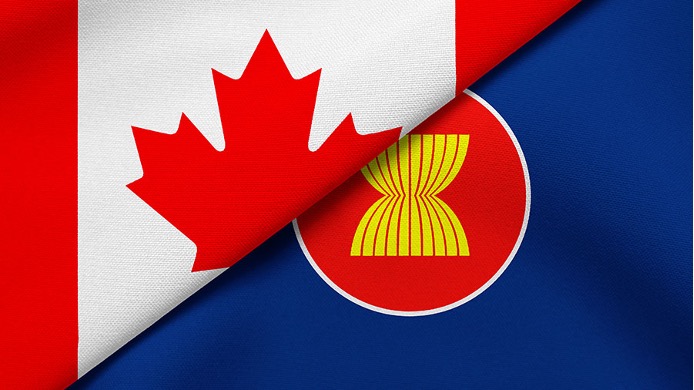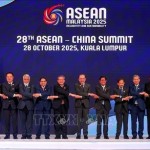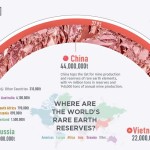Total number of posts 435.
With the goal of updating trade relations and providing additional information about the ASEAN region to Canadian businesses, the Canada-ASEAN Business Council (CABC) successfully organized a conference in Montreal. The event attracted more than 200 participants, including Canadian government officials, ASEAN diplomats, business leaders, and experts from both sides.

The conference received significant attention as it addressed a range of issues directly related to Canada and ASEAN, such as trade and investment opportunities and policies, as well as expertise and experience sharing by specialists aimed at fostering specific areas of cooperation between the two sides in the near future.
The CABC Montreal Regional Director, Ms. TB Nguyen, told VNA reporters in Canada that the participation of hundreds of entrepreneurs, officials, and stakeholders to support Canadian businesses entering the ASEAN market would help create more opportunities for Canadian businesses. These opportunities span various sectors, including green technology, clean technology, and energy transition.
Ms. TB Nguyen emphasized that this would open up many opportunities, as evidenced by the contributions of the participants and speakers at the conference.
Canada has been actively advancing its strategic trade initiatives in the Indo-Pacific region, focusing on free trade agreements (FTAs) with ASEAN as a bloc and with Indonesia individually. These two agreements are expected to be finalized by 2025, serving as a key catalyst for enhancing trade relations between the two sides.
Recently, preparatory meetings for the 10th Negotiation Committee (TNC) session, involving four working groups on goods, services, investment, and food safety, were held under the framework of the ASEAN-Canada Free Trade Agreement (ACaFTA) negotiations. These meetings took place in Jakarta, Indonesia, from October 27 to November 1, 2024. During the session, discussions covered various topics aimed at concluding the ACaFTA negotiations by 2025, as anticipated.
Currently, trade and investment relations between the two sides primarily operate under the Comprehensive and Progressive Agreement for Trans-Pacific Partnership (CPTPP), which includes four ASEAN member countries. The completion of a free trade agreement with ASEAN is expected to boost Canada's GDP by an additional $2.5 billion and ASEAN's GDP by nearly $40 billion.

According to former Canadian Deputy Prime Minister and former Premier of Quebec, Mr. Jean Charest, in the wake of COVID-19 and issues of national security, Canada has learned that it stands to benefit from diversifying its trade activities in Asia and ASEAN. He also noted that Canada sees growth opportunities in ASEAN through trade and investment. Therefore, Canada is negotiating a highly significant trade agreement to establish trade rules that facilitate easier access to markets in the region.
ASEAN represents a relatively large market with nearly 700 million people. The region is highly focused on areas such as energy, the environment, and infrastructure development—fields in which Canadians possess deep expertise and financial resources to support development. Canada plans to establish a Canada-ASEAN Chamber of Commerce, working in tandem with the Canada-ASEAN Business Council to help Canadian businesses seize opportunities in the region.
In ASEAN, Vietnam is regarded as a dynamic economy and a gateway to the region for Canadian businesses. Vietnam and Montreal are now directly connected through maritime transport from Hai Phong Port, creating favorable conditions for logistics and supply chain operations.
Wayne Farmer, Executive Chair of the CABC, remarked that Vietnam is pursuing decarbonization and energy transition—sectors where Canadian investors can actively participate. Vietnam itself serves as a microcosm of all the industries that are currently gaining attention. He noted that Vietnam is increasingly becoming part of the manufacturing and supply chain for goods exported to Canada. Naturally, this presents opportunities in both directions—for Vietnamese consumers to purchase Canadian products and for Canadian companies to integrate Vietnamese firms into their supply chains.
Canada is an export-driven country, with exports accounting for 60% of its GDP. A significant portion of Canadian exports rely on the U.S. market, which may become more challenging in the future. Exploring ASEAN and Vietnam is one of Canada’s strategies to diversify its markets, and these regions are poised to become key destinations for Canadian businesses in the near future.














